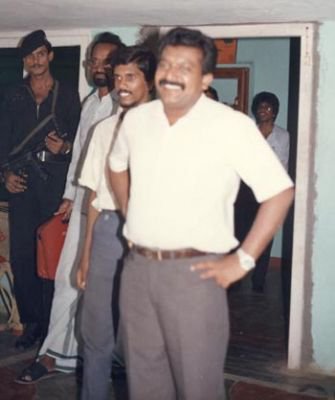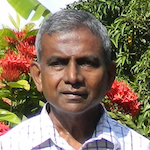The Tamil Leadership After The 1977 Elections

1979 – 83: The Mounting Repression – Part III
Amirthalingam had many flaws as a politician. A non-violent struggle to which he was verbally committed would have meant building up a mass-movement. The Federal Party (the TULF’s predecessor) had developed as a mass-movement in the latter 1950s, but this was on the wane in the 60s for reasons including the nationalisation of schools, which made many school teachers government servants overnight. Moreover, a feasible goal for non-violent action would have been step-by- step reform, such as the Bandaranaike- Chelvanayakam Pact of 1957. A goal such as a separate state that was bound to heighten emotions on both sides was not an appropriate goal for non-violent action.
Thus by default of not building a mass movement and having to face electoral competition, the TULF was led to stir chauvinistic emotions, brand its opponents traitors and directly or indirectly rely on the militant youth. But its real programme was reform. Its dealings with the militant youth form a dark and dishonourable chapter. When it came to the demand for UDI (Unilateral Declaration of Independence) in early 1982, Amirthalingam knew that it would unnerve the Government and that the Tamil people were in no position to bear the consequences. Yet, the absence of political movement on the part of the Government to resolve the problem placed the TULF in a difficult position. In the meantime, the militant youth were coming into their own.
 Perhaps, Jayewardene’s nervousness after the questionable 1982 Referendum (see below) and the actions resulting from this did not let him see that he and Amirthalingam either stood together or fell together. By 1983, any political solution that Amirthalingam could win from Jayewardene was bound to be opposed as inadequate by the militant sections. But Amirthalingam alone among the Tamil leaders of that time, had the self-confidence of a leader and the fighting qualities to take on the militants when he had a solid basis for doing so.
Perhaps, Jayewardene’s nervousness after the questionable 1982 Referendum (see below) and the actions resulting from this did not let him see that he and Amirthalingam either stood together or fell together. By 1983, any political solution that Amirthalingam could win from Jayewardene was bound to be opposed as inadequate by the militant sections. But Amirthalingam alone among the Tamil leaders of that time, had the self-confidence of a leader and the fighting qualities to take on the militants when he had a solid basis for doing so.
The PTA and its Effects
Another episode of which we will have more to say later is the passing of the Prevention of Terrorism Act in July 1979 and the order given by President Jayewardene to Brigadier Tissa (Bull) Weeratunge, the Army’s Chief of Staff and his relative. Weeratunge was also a brother-in-law of Jayewardene’s new IGP, Ana Seneviratne, who like Weeratunge, but before him, proved his suitability for the top job, through services of a questionable nature in Jaffna. The order from Jayewardene gave Weeratunge six months, until 31st December 1979, “to eliminate, in accordance with the laws of the land, the menace of terrorism in all its forms from the Island and more specifically from the Jaffna District.” The order placed at Weeratunge’s disposal ‘all the resources of the State’.

